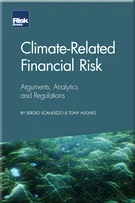Regulation and regulatory capital
Introduction
Value-based management
The risk management and capital management frameworks
Credit risk measurement and management
Market risk measurement and management
Property and casualty insurance risk measurement and management
Life insurance risk measurement and management
Operational risk measurement and management
Economic capital
Regulation and regulatory capital
Ratings and rating agency capital
Conclusion: looking backwards and forwards
Acknowledgements
Glossary
10.1 INTRODUCTION
The insurance industry and insurance companies are heavily regulated. There are many reasons for this. An insurance contract is essentially a promise to pay in the future. A policyholder buying an insurance policy pays the premium up front and gets reimbursed for claim costs when an insured event occurs. The time lag between the premium payment and the claim payment could be substantial. For example, an education endowment policy purchased for a newborn baby will have a maturity date that is almost 20 years into the future, when the beneficiary of the endowment policy goes to college. Similarly, a life-dependent immediate annuity purchased at a retirement age of 60 will have income streams from the insurance company issuing the policy for the next 20, 30 or even 40 years.
The best known example of an extremely long-tailed property & casualty (P&C) insurance policy is asbestos insurance because of the latency of asbestos-related disease. Many of the asbestos policies were issued in the mid-20th century. The manufacturing, importation, processing and sale of asbestos-containing products has largely been banned in the US since 1989 (US Environmental Protection Agency
Copyright Infopro Digital Limited. All rights reserved.
As outlined in our terms and conditions, https://www.infopro-digital.com/terms-and-conditions/subscriptions/ (point 2.4), printing is limited to a single copy.
If you would like to purchase additional rights please email info@risk.net
Copyright Infopro Digital Limited. All rights reserved.
You may share this content using our article tools. As outlined in our terms and conditions, https://www.infopro-digital.com/terms-and-conditions/subscriptions/ (clause 2.4), an Authorised User may only make one copy of the materials for their own personal use. You must also comply with the restrictions in clause 2.5.
If you would like to purchase additional rights please email info@risk.net










